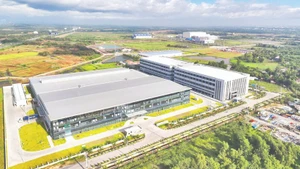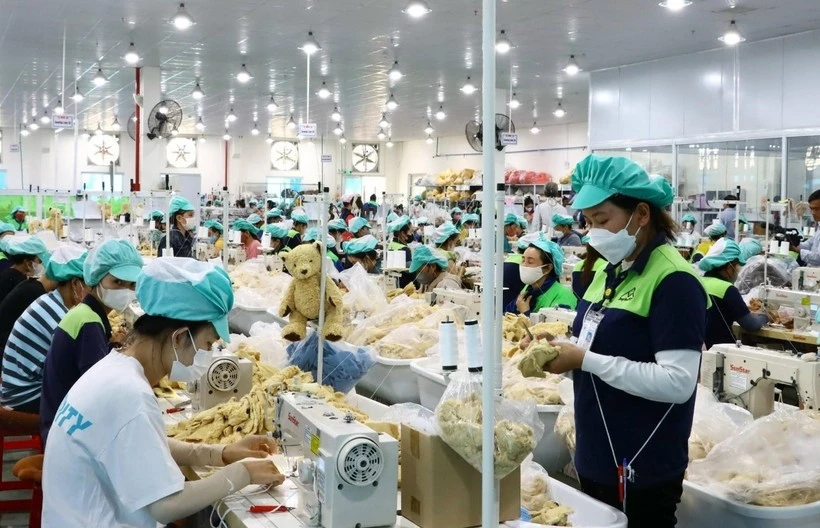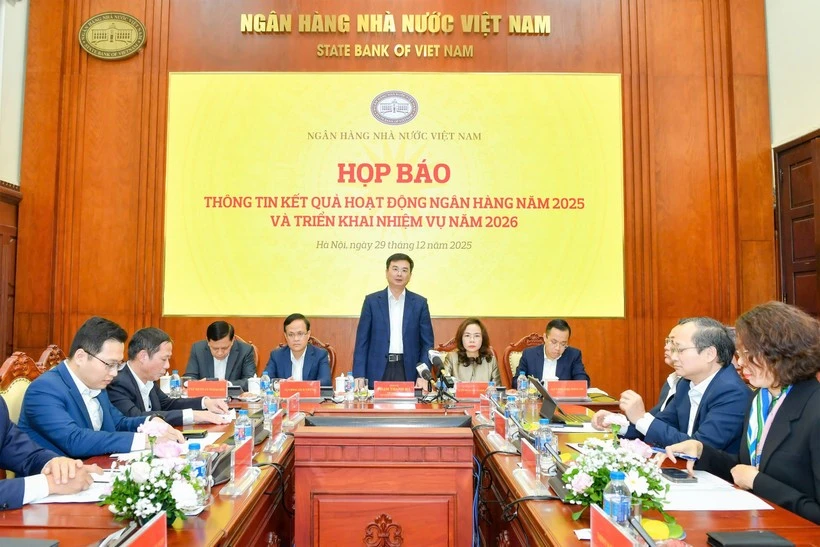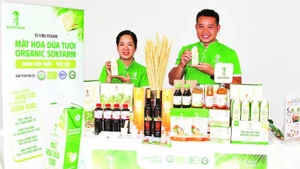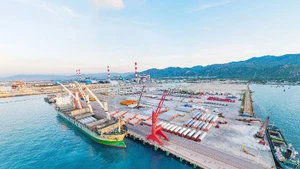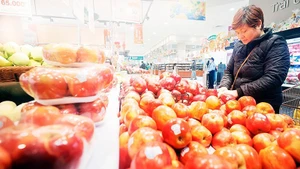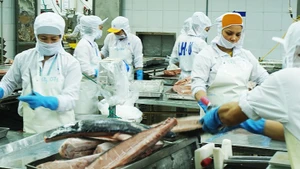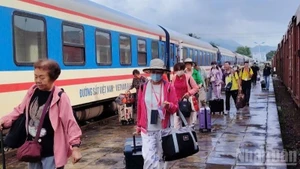However, rice growers are facing many concerns, as the selling prices of rice harvested before Tet are low.
To support farmers, local authorities and functional agencies have been implementing many immediate solutions as well as planning more effective rice production.
Rice prices continuously decrease
This winter-spring crop, farmer Le Quoc Dat in Dong Yen Commune, An Bien District, Kien Giang Province planted nearly 4 hectares of Dai Thom 8 rice variety, including 18 hectares of his own land and more than 20 hectares of rented land. There are about 5 days left until the rice is ripe and harvested, however, Dat said that he has just received a deposit from traders at a price of only 6,700 VND/kg, much lower than the price of 8,000-9,000 VND/kg at the same time last year.
“The cost of investing in each hectare of rice land is about 4 million VND. With the area of land at home, if the yield reaches 800kg/hectare, farmers will still have a small profit. As for rented land, the yield is still the same, with the rice price at 6,700 VND/kg, it will only break even or lose capital,” said Dat.
In recent days, rice prices in Kien Giang have fluctuated erratically. Purchase transactions have been gloomy at times and in some places, causing difficulties and worries for farmers. To reduce risks and rotate capital for the next crop, most farmers choose to sell fresh rice in the field, accepting a lower price.
Nguyen Thanh Dien, Deputy Head of the Department of Agriculture and Rural Development of An Minh District, said that the locality mainly grows ST24, ST25 and Dai Thom 8 rice, but the price of ST24 and ST25 rice has dropped to 9,700 VND/kg, down 1,300 VND/kg compared to the same period in 2024. Red Fly Rice (salt-tolerant rice) and Dai Thom 8 have prices ranging from 6,700-6,800 VND/kg, down 1,200 VND/kg. In general, farmers’ profits have decreased compared to last year but are still profitable.
In Soc Trang, rice prices have started to decrease for more than a month now, at a rate of 1,000-2,000 VND/kg, depending on the variety. Light fragrant rice at the beginning of the season cost more than 9,000 VND/kg, but in recent days it has only been over 7,000 VND/kg. ST24 and ST25 fragrant rice also had the sharpest decrease of nearly 2,000 VND/kg.
Nguyen Van Tu in Nga Nam Town shared: “I kept rice waiting for the price to increase again but was disappointed because, near Tet, the price dropped by more than 1,000 VND/kg. Currently, the price of ST25 fragrant rice purchased by traders is only 8,500 VND/kg, down 3,000 VND/kg. I am worried whether the price of rice will continue to decrease or not?”.
According to many businesses, the decrease in rice prices over the past month has many reasons, but mainly due to the sharp decrease in export rice prices due to increased supply, at the same time, many countries have reduced rice imports for storage, causing rice to decrease sharply with an average decrease of about 18-25 USD/tonne. Moreover, when world rice prices decreased, many domestic businesses offered low prices to recover capital, causing the domestic rice price level to decrease even more sharply. Meanwhile, farmers are rushing to sell to have money to pay off debts for seeds, and agricultural materials and to spend during Tet.
Efforts exerted to support farmers
According to the Plant Protection Department of Kien Giang Province, although the selling price of rice is lower than in previous years, it is still profitable compared to the production cost. However, for individual rice farmers, profits are lower due to high input costs while the selling price is low.
To limit difficulties, local authorities are urgently directing the agricultural sector to advise farmers to save as much as possible on the cost of materials, fertilisers, and pesticides when planting crops. In addition, the agricultural sector closely coordinates with the industry and trade sector to monitor and regularly update the market situation and rice purchase prices to promptly inform farmers.
The Director of Hung Loi Cooperative, Truong Van Hung, said the cooperative's winter-spring rice has harvested more than 50% of the area. Thanks to being provided with agricultural materials at the original price from the distribution company, the members have low investment costs and the reduced rice price still ensures profits.
Commune member Pham Hoang Tran calculated that this year, 3 hectares of newly harvested ST25 rice were produced, yielding nearly 6.3 tonnes/hectare with a selling price of 10,300 VND/kg of fresh rice in the field. After deducting expenses, the profit was nearly 43 million VND/hectare.
According to the Director of the Department of Agriculture and Rural Development of Soc Trang Province, Huynh Ngoc Nha, in the 2024-2025 winter-spring rice crop, the whole province has planted more than 140,350 hectares, harvested nearly 30,000 hectares, with an estimated yield of 6.27 tonnes/ha and an output of 170,011 tonnes. The provincial agricultural sector recommends that in the Long Phu-Tiep Nhut sweetening project areas in Tran De and Long Phu districts and areas using rainwater, farmers should not plant rice after harvesting the early winter-spring crop to prevent the effects of drought and salinity.
For freshwater areas such as Ke Sach District and part of Chau Thanh District, only when the water source on the canals in the fields is capable of serving production can they decide to plant rice. Farmers are advised to change the crop structure in the rice growing area due to a lack of irrigation water in the dry season to grow short-term crops that use less water.
The Director of the Department of Agriculture and Rural Development of Kien Giang Province Le Huu Toan commented that in the coming time, it is necessary to strengthen the connection between cooperatives, enterprises and markets.
Accordingly, it is necessary to establish direct distribution channels from farmers to enterprises and markets, reduce intermediary costs, increase profits for farmers, share when the market fluctuates, reduce risks so that farmers can share resources and experiences, and access enterprises and markets more easily. In addition, farmers need to fully grasp the benefits of promoting consumption linkages, strengthening cooperation, and improving rice quality to meet the requirements of domestic and international markets.
The authorities and agricultural sectors of the Mekong Delta localities hope that banks will step in, providing financial support and credit programs for farmers, so that they can maintain production in difficult times, creating favourable conditions for the sustainable development of the rice industry.

